This past Saturday, I saw an adult Pickerel Frog out on the path in Explore the Wild. It was a bright sunny, and dry day. I probably wouldn’t even mention this if it were February or March, or even April, the months when this species breeds, necessity bringing them down to the water for courting and laying eggs. Most of the rest of the year they’re up in the woods or well hidden along the edge of the water, not out in the open on a dry sunny day. Strange.
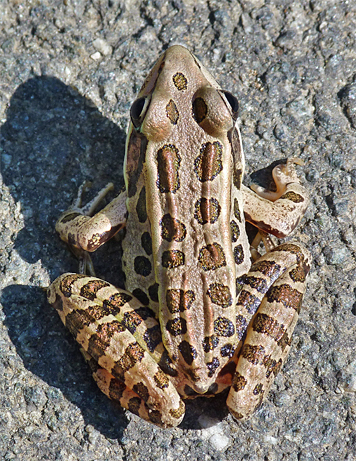
Back in June I saw dozens of these frogs ashore. But they were tiny, newly morhped individuals making their first trips abroad, heading up into the woods for the very first time. I hope this adult found it’s way safely to wherever it was going.
There are several alders growing on the north side of the Wetlands. I noticed that there was a fluffy white substance on the branches of one of these woody, wetland shrubs. A closer look and I could see it was a group of aphids, Woolly Aphids. Interesting enough, but what do these aphids attract? Ants, wasps, and, what I was really hoping to see, the only North American carnivorous butterfly, the Harvester.

The ants and wasps come for the honeydew produced by the aphids. The butterfly comes to lay eggs on the plant, the resulting larvae that hatch from the eggs eat the aphids. It’s the caterpillars that are carnivorous, not the adult butterfly.
The adults do use the aphids for sustenance, not by eating them but by sipping the honeydew as do the ants and wasps. Besides the honeydew of the aphids, the adults also feed on dung, sap, and sucked up minerals from mud.
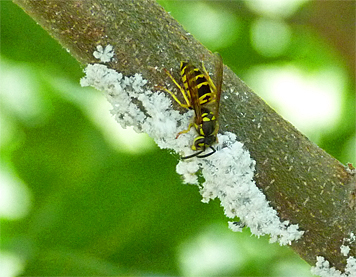
I’ve been watching the aphids for several weeks now but I’ve yet to see either butterfly or caterpillars. I intend keep up the vigil and will report my findings. It’s an interesting caterpillar, not only for its diet but its use of camouflage. As the caterpillar develops it becomes coated with wax from the amphids and actually looks like a moving mass of woolly aphids.
While on the subject of insects, I spotted a very large robberfly. They seem to be more common during the later part of summer. These diptera eat other insects and their numbers are probably due to the greater mass of insects in general at that time of year.

I believe the robberfly in the photo to be Promachus rufipes, the Red-footed Cannibalfly. They can be well over an inch in length. The preferred hunting method is to lie in wait near a busy nectar source, or other insect attractant, and ambush whatever comes into view, usually capturing the prey in flight. If you have a butterflybush or other flowers in your yard that are swarming with butterflies, beetles, and other nectar-loving insects, you’ve probably seen a robberfly perched nearby.
One more insect worthy of mention is the Great Blue Skimmer. I’ve featured these largest of the skimmer family of dragonflies often in this Journal, they’re very common here in our Wetlands. Take a moment and look at the eyes of this dragonfly.
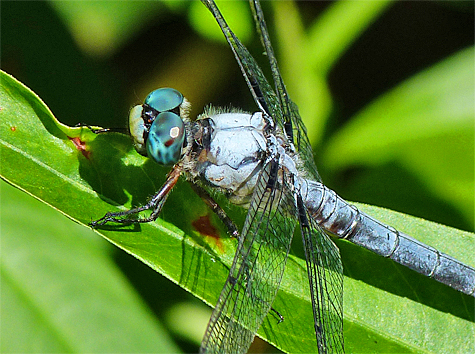
There are other dragonflies with blue eyes, but the eyes of Great Blue Skimmers seem deep blue, they have depth to them. It’s almost like looking into the sea, a calm, clear blue pelagic sea, away from the turbulence of the coast.
I’m still finding juvenile Green Tree Frogs along the edge of the Wetlands, even more than previously, a good year for these little Hylidae.
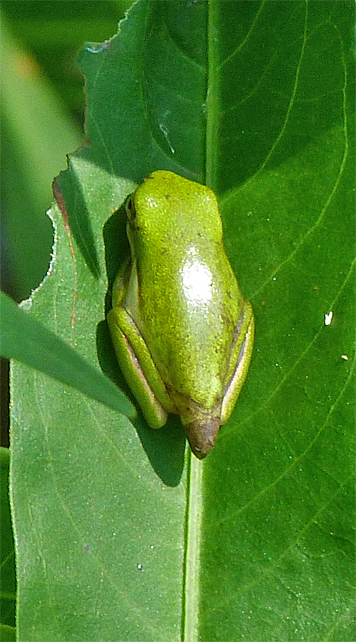
And finally, a few plants. Due to a good growing season, and careful cutting back of unwanted competing plants, the Partridge Pea in Catch the Wind is doing well this year.
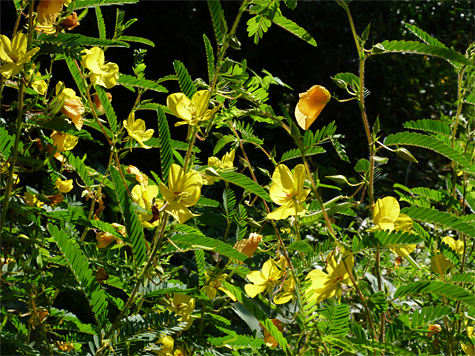
Partridge Pea is a favorite food source for Cloudless Sulphur Butterflies. I’ve observed buttterflies laying eggs on these plants for over a month now. At present there are both eggs and caterpillars on the plants.
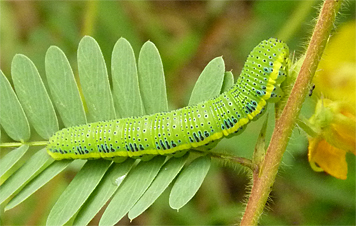
Strawberry Bush, or Heart’s a Bursting, is nearing maturity. Still green, the fruit will turn pink before splitting open to reveal the bright red seeds inside.
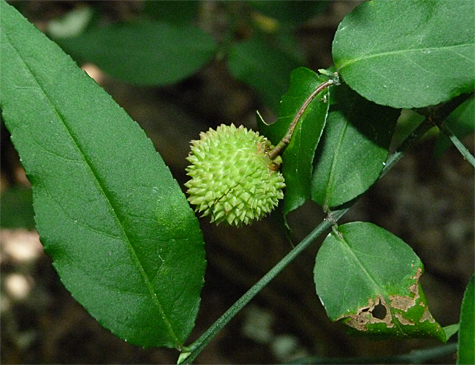
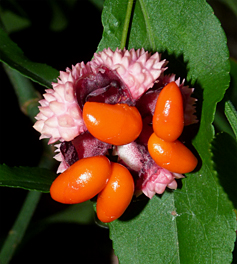
The above plant is on the Dinosaur Trail, on the right just past the Albertosaurus.
.
.
.
There’s much more going on out on the Outdoor exhibit Loop than what I’ve just described, so keep your eyes open and enjoy the walk!